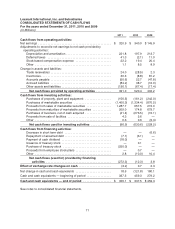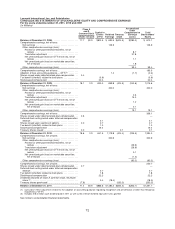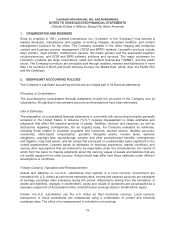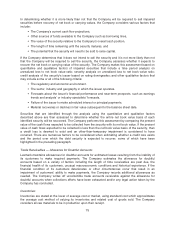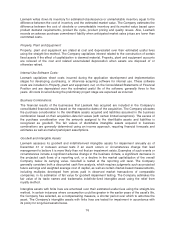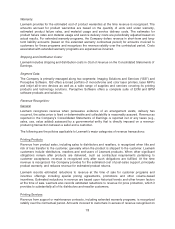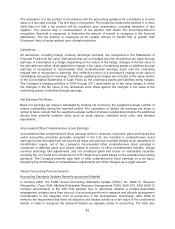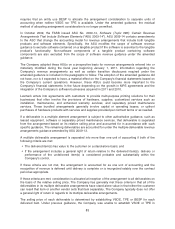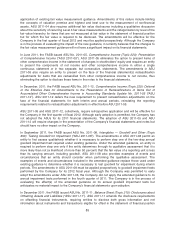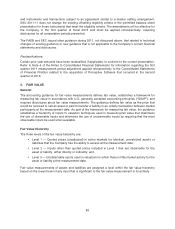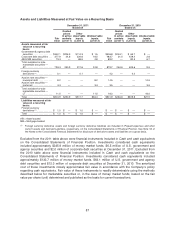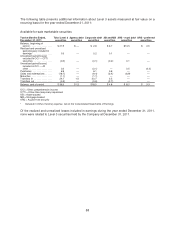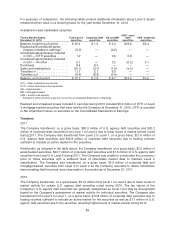Lexmark 2011 Annual Report Download - page 83
Download and view the complete annual report
Please find page 83 of the 2011 Lexmark annual report below. You can navigate through the pages in the report by either clicking on the pages listed below, or by using the keyword search tool below to find specific information within the annual report.
support or maintenance contracts are recorded as deferred revenue until the appropriate revenue
recognition criteria are met. Revenue for time and material contracts is recognized as the services are
performed.
ECM and BPM Software and Solutions
Lexmark has two general forms of software agreements with customers, perpetual licenses and
subscription services. Provided that all other recognition criteria has been met, license revenue is
recognized when the customer either takes possession of the software via a download, or has been
provided with access codes that allow immediate possession of the software. Conversely, subscription
services revenue is recognized ratably over the duration of the contract as the customer does not take
ownership of the software. Revenue from software support services is recognized as the services are
performed, or is deferred and recognized ratably over the life of the contract for ongoing support
service obligations that are billed in advance or that are part of multiple element revenue
arrangements.
Multiple Element Revenue Arrangements
Lexmark enters into transactions that include multiple elements, such as a combination of products and
services. Revenue for these arrangements is allocated to each element based on its relative fair value
and is recognized when the revenue recognition criteria for each element have been met. For
hardware products and related supplies, relative fair value is determined by utilizing BESP, which is
developed using a weighted average price approach taking into account company specific sales data.
BESP for the Company’s product related service deliverables is determined by utilizing a cost plus
margin approach. For software products and related services, relative fair value is determined using
VSOE which is based on company specific stand-alone sales data or renewal rates. For software
arrangements, the Company may use the residual method to allocate arrangement consideration as
permitted under the existing accounting guidance. For more details on the Company’s multiple element
arrangements and the development of BESP, see discussions on Accounting Standards Updates Nos.
2009-13 and 2009-14 under Recent Accounting Pronouncements later in this section.
Research and Development Costs:
Lexmark engages in the design and development of new products and enhancements to its existing
products. The Company’s research and development activity is focused on laser and inkjet devices
and associated supplies, features and related technologies as well as software. The Company
expenses research and development costs when incurred. Research and development costs include
salary and labor expenses, infrastructure costs, and other costs leading to the establishment of
technological feasibility of the new product or enhancement.
Advertising Costs:
The Company expenses advertising costs when incurred. Advertising expense was approximately
$55.3 million, $53.0 million and $51.5 million in 2011, 2010 and 2009, respectively.
Pension and Other Postretirement Plans:
The Company accounts for its defined benefit pension and other postretirement plans using actuarial
models. Liabilities are computed using the projected unit credit method. The objective under this
method is to expense each participant’s benefits under the plan as they accrue, taking into
consideration future salary increases and the plan’s benefit allocation formula. Thus, the total pension
to which each participant is expected to become entitled is broken down into units, each associated
with a year of past or future credited service.
79




